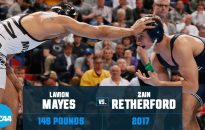Herbalife is the sports nutrition and presenting partner for the LA Galaxy. Herbalife Dietitians work closely with the LA Galaxy technical staff to make sure we are maximizing their nutrition to support performance goals. As an athlete, your offseason can feel like a breath of fresh air—a chance to rest, recharge, and reflect. But it’s […]


Herbalife is the sports nutrition and presenting partner for the LA Galaxy. Herbalife Dietitians work closely with the LA Galaxy technical staff to make sure we are maximizing their nutrition to support performance goals.
As an athlete, your offseason can feel like a breath of fresh air—a chance to rest, recharge, and reflect. But it’s also an opportunity to set yourself up for an even stronger return to the pitch. Imagine stepping into the next season not just rested, but revitalized – feeling fully fueled and ready for peak performance.
This is your challenge: How can you use this offseason to elevate your game through nutrition? The solution lies in understanding the unique needs of this period and crafting a plan that aligns with your body composition goals and training regimen. Let’s dive into how you can make the most of your offseason to ensure that you return better than ever.
Think of the offseason as a transitional period rather than a break: it bridges one end of the season with the beginning of another. It is the ideal time to reassess your dietary habits and fine-tune them to align with your goals. It is also a great time to experiment with different foods to discover what works best for you. Your focus for the offseason will be to ensure your body is getting exactly what it needs to support your performance long-term.
Since you are training less frequently and/or less intensely, your body likely doesn’t need as much fuel as it does during the season.1 In order to compensate for a reduction in overall energy needs, you may want to adjust your carbohydrate intake depending on your body composition goals.
Incorporating more non-starchy vegetables into your meals is an easy way to reduce carbohydrate intake while boosting nutrient density, as they are rich in fiber, vitamins and minerals. Non-starchy vegetables include: asparagus, green beans, beets, Brussels sprouts, broccoli, carrots, cauliflower, celery, cucumber, leafy greens, squash, peppers, etc. This simple change not only aligns with your reduced energy needs, but also supports overall health and recovery.
Maintaining protein intake is vital during periods of reduced training as it plays a critical role in muscle repair and growth.2 One best practice is to distribute your protein intake evenly throughout the day by consuming protein every 3-4 hours.2 Make sure to focus on whole-food sources of protein like fish, shrimp, egg whites, chicken breast, soy, beans, lentils, tofu, quinoa, and chia seeds.2-3 Try switching up your protein sources to provide your body with a variety of nutrients while supporting your muscle growth during the offseason.
The offseason is also an ideal time to experiment with new foods as you have ample time to assess how they affect your body. Explore different cuisines or new foods to discover what works best for you. If you typically have eggs and toast for breakfast, try yogurt with banana and peanut butter or a smoked salmon bagel. A diverse diet can enhance your nutrition, prevent deficiencies, and support your overall health. Pay attention to how your body responds to these foods in terms of your overall energy levels, digestion, and overall performance. This gives you the opportunity to consider incorporating them into your routine for the upcoming season.
It’s important to redefine your body composition goal as you head into the offseason. Are you trying to maintain your current weight, build muscle, or reduce body fat?
Each of these requires a customized approach to nutrition, especially during the offseason as your activity levels change. Take this time to reevaluate your dietary habits and make the following adjustments to achieve your body composition goals. Meet with a Sports Dietitian for more guided assistance to get you where you want to be at the beginning of the next season.
Goal: Lean Out
For athletes looking to lose weight/fat, prioritize nutrient-dense, lower-calorie foods like fruits, vegetables, lean proteins, and low-fat dairy products.3 Aim for non-starchy vegetables to fill up at least half of your Performance Plate as they also provide micronutrients that are essential for recovery. Your carbohydrate sources should make up around a fourth of your Performance Plate. Opt for whole grains over refined as they contain more fiber and protein.
Overall, you want to choose foods high in fiber and protein as they take longer to digest and will help you stay full longer. 3 Choose a low- or zero-calorie hydration source like water, sparkling water, or unsweetened tea, drinking something with every meal and throughout the day.
Remember, gradual weight loss of no more than 1-2 lbs per week is recommended, as losing weight too quickly can lead to muscle loss and negatively impact performance.3
It is essential to avoid crash diets, especially one that omits an entire good group or macronutrient. These diets are not only unsustainable, they also prevent your body from receiving enough nutrients and energy to support muscle growth and maintenance as you shed fat mass. While you are compensating for a decrease in activity, it is important not to restrict foods – just manage your intake and make mindful choices.
Goal: Maintenance
If your goal is to maintain your body composition, match your carbohydrate intake to your activity level.3 On less active days, aim for carbohydrate sources to make up around a third of your Performance Plate; on more active days with longer or more intense training sessions, you can increase it to a half. Strive for two cups of colorful vegetables and/or fruits at every meal and increase your intake of lean protein sources and low-fat dairy products.3 Include some beneficial fats with each Performance Plate and be sure to maintain adequate hydration.
Goal: Gain Weight and/or Muscle
The offseason is an ideal time for athletes looking to gain muscle mass since maintaining a caloric surplus is even easier when you have lower training demands.
Make sure to spread out your energy and protein intake evenly throughout the day, aiming for five to nine meals and snacks each day with a protein source at every meal.3 As always, maintain adequate hydration levels, drinking fluids with each meal and throughout the day.
Add in plenty of nutrient- and energy-dense foods including whole grains or beneficial fats such as avocado, nuts and nut butters, olive oil, fatty fish, and whole eggs.3 Carbohydrates can comprise a third to half of your Performance Plate (depending on training intensity). In general, you should still be mindful of your total intake to prevent gaining unwanted fat.3
Check in with your weight on a weekly basis, and shoot for gaining no more than 1-2 lbs per week. If you have access to body composition testing (i.e., InBody, DEXA, body calipers, etc.) then you can more accurately track what type of tissue you are gaining (muscle vs fat) and adjust your macronutrients to better match your needs as you progress through the offseason.
Goal: Recovery or Return to Play after Injury
Maybe you were injured during the season and want to take the offseason to recover sufficiently so you will be ready to play and back in full force by next season. Your goal nutritionally is to provide your body with enough energy, protein, hydration and overall nutrients to maintain muscle mass while injured and to support the healing process.
You also want to add in plenty of anti-inflammatory and antioxidant-rich foods (i.e., omega-3-rich fish, colorful fruits and vegetables, herbs, and spices) to help reduce inflammation and support immunity and recovery.
Shoot for a plate that looks similar to a Lean Out Plate, with half your plate colorful fruits and vegetables, a quarter of your plate fiber-rich carbohydrates, and the final quarter of your plate lean protein (like salmon), also including some beneficial fats like olive oil or avocado. Again, don’t forget to hydrate throughout the day.
Without a hectic training, game, and travel schedule, the offseason is the perfect time to prioritize sleep. Use this time to get into a good rhythm (i.e., going to bed and waking up at the same time daily) and find your best bedtime routine. You can optimize your sleep schedule in preparation for next season and trial bedtime snacks or different relaxation techniques to get you falling asleep quicker, for longer, and with higher quality. Sleep is essential for your recovery and restoration, helping you return to play.
Enhancing your training with strategic nutrition and hydration is especially important during the offseason as your schedule and training regimen change. To optimize your performance and recovery, it is important that you consume the right foods in the right amounts at the right times.
It is recommended to consume a meal 1-2 hours before training that is high in carbohydrates, moderate in protein, and low in fat and fiber.4 This ensures that you have sufficient energy without the digestive discomfort that foods high in fat and fiber may cause. Remember to use the nutritional strategies for your specific body composition goal to build your plate, and listen to your body to find what works best for you.
Hydration is equally important; it is recommended to drink 16-20 fl oz an hour before training.4 During training, drink 8-10 oz every 15-20 minutes to maintain hydration and performance.4 Consider sports drinks with electrolytes in addition to water to replenish losses.4 For prolonged exercise, consume around 30-60 grams of carbohydrates for every hour of exercise.4
After training, it is essential to refuel as your muscles require carbohydrates to replenish glycogen stores and protein to repair and grow muscles.4 A balanced recovery meal incorporating carbohydrates, proteins, and healthy fats should be consumed within 2 hours post-exercise.4 Fluids and electrolytes are also important to replenish: aim to drink 16-20 fl oz of a sports drink for every pound of weight lost during training.4 If you do not feel like eating solid food, try drinking a beverage that at least includes carbohydrates and proteins, like a protein shake with fruit.
Your offseason is an opportunity to build a stronger foundation for a successful upcoming season. Integrating these strategies into your offseason routine will set the stage for enhanced performance and well-being. Focus on refining your nutrition, experimenting with new foods (if desired), and maintaining smart dietary practices. So, embrace this time with strategic planning and get ready to step into your best season yet.
References
- Clemente FM, Ramirez-Campillo R, Sarmento H. Detrimental Effects of the Off-Season in Soccer Players: A Systematic Review and Meta-analysis. Sports medicine (Auckland). 2021;51(4):795-814. doi:10.1007/s40279-020-01407-4.
- Jäger R, Kerksick CM, Campbell BI, et al. International Society of Sports Nutrition Position Stand: Protein and exercise. Journal of the International Society of Sports Nutrition. 2017;14(1):20-20. doi:10.1186/s12970-017-0177-8
- Larson AJ, & Woodruff K. Chapter 3: Energy Balance, Body Weight and Body Composition. Sports nutrition strategies for success: A practical guide to improving performance through nutrition. Momentum; 2016 Press.https://ebookcentral.proquest.com/lib/socal/reader.action?docID=4753452&ppg=68
- Larson AJ, & Woodruff K. Chapter 2: Optimal Eating for Optimal Training. Sports nutrition strategies for success: A practical guide to improving performance through nutrition. Momentum; 2016 Press.https://ebookcentral.proquest.com/lib/socal/reader.action?docID=4753452&ppg=68














